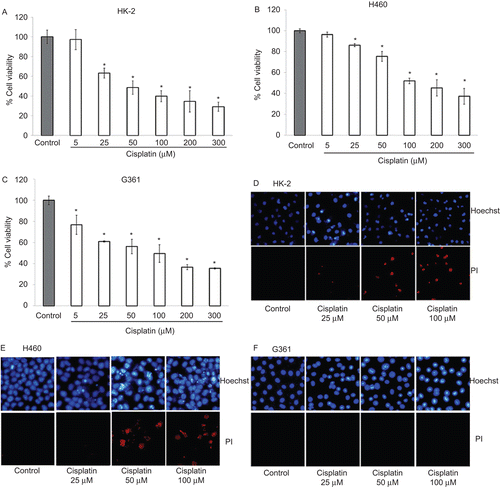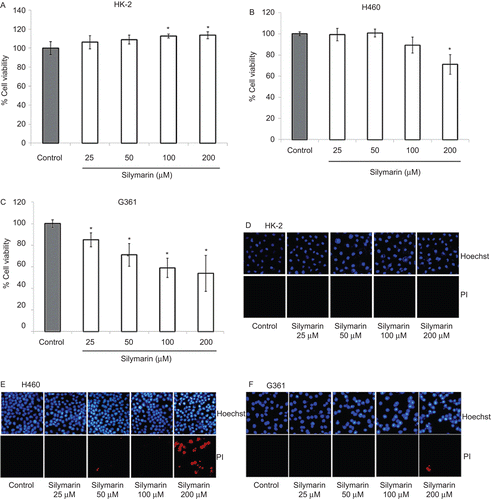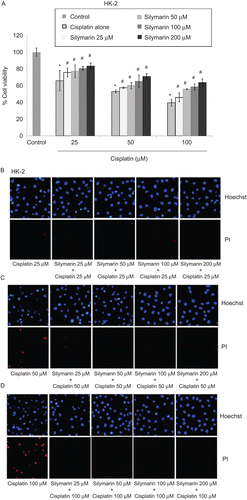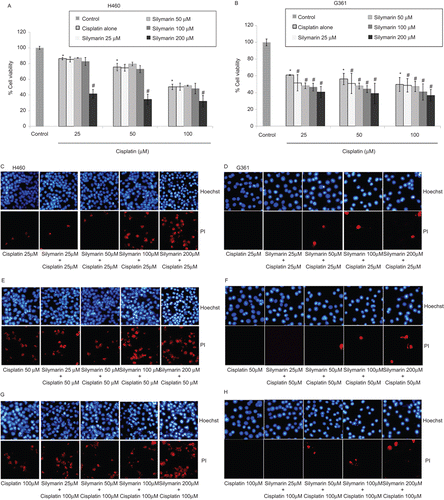Figures & data
Figure 1. Cytotoxic effect of cisplatin on HK-2, H460, and G361 cells. (A–C) Cells were treated with various concentrations of cisplatin (0–300 µM) for 24 h and cell viability was measured by MTT assay. Values are means ± SD of three independent experiments, *P < 0.05 versus non-treated control. (D–F) Apoptotic and necrotic cells were detected by Hoechst 33342 and propidium iodide co-staining assay and examined under a fluorescence microscope.

Figure 2. Effect of silymarin on HK-2, H460, and G361 cells. (A–C) Cells were treated with various concentrations of silymarin (0–200 µM) for 24 h and cell viability was measured by MTT assay. Values are means ± SD of three independent experiments, *P < 0.05 versus non-treated control. (E–F) Nuclear morphology of apoptosis and necrosis detected by Hoechst 33342 and propidium iodide assay.

Figure 3. Protective effect of silymarin on cisplatin-induced HK-2 cell death. (A) Cells were pretreated with various concentrations of silymarin (25–200 µM) for 1 h prior to 24-h cisplatin exposure. Cell viability was measured by MTT assay. Values are means ± SD of three independent experiments, *P < 0.05 versus non-treated control, and #P < 0.05 versus cisplatin-treated control. (B–D) Nuclear morphology of apoptosis and necrosis detected by Hoechst 33342 and propidium iodide assay.

Figure 4. Effect of silymarin on cisplatin-induced H460 and G361 cell death. (A and B) Cells were pretreated with various concentrations of silymarin (25–200 µM) for 1 h prior to 24-h cisplatin treatment. Cell viability was measured by the MTT assay. Values are means ± SD of three independent experiments, *P < 0.05 versus non-treated control, and #P < 0.05 versus cisplatin-treated control. (C–H) Nuclear morphology of apoptosis and necrosis detected by Hoechst 33342 and propidium iodide assay.
